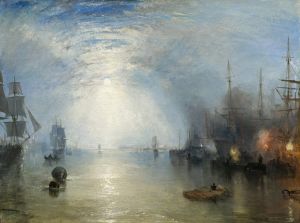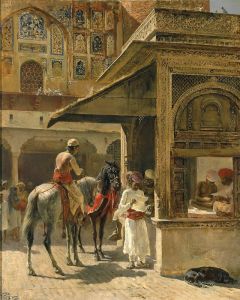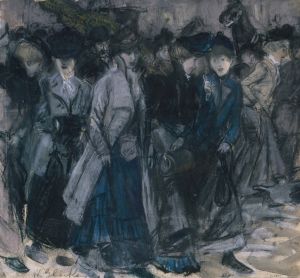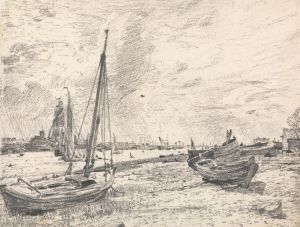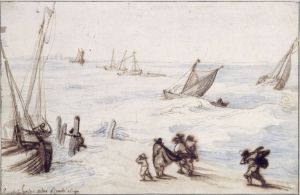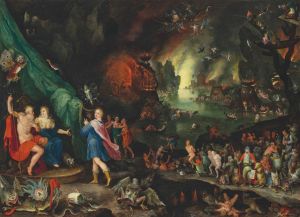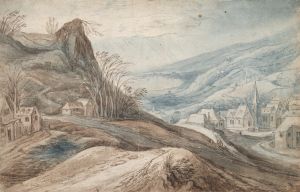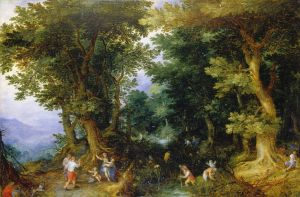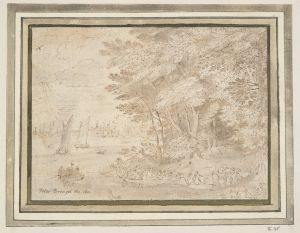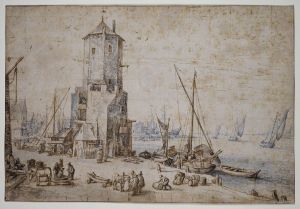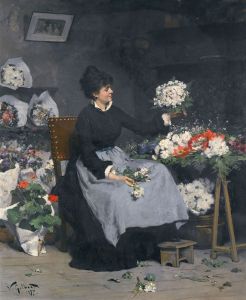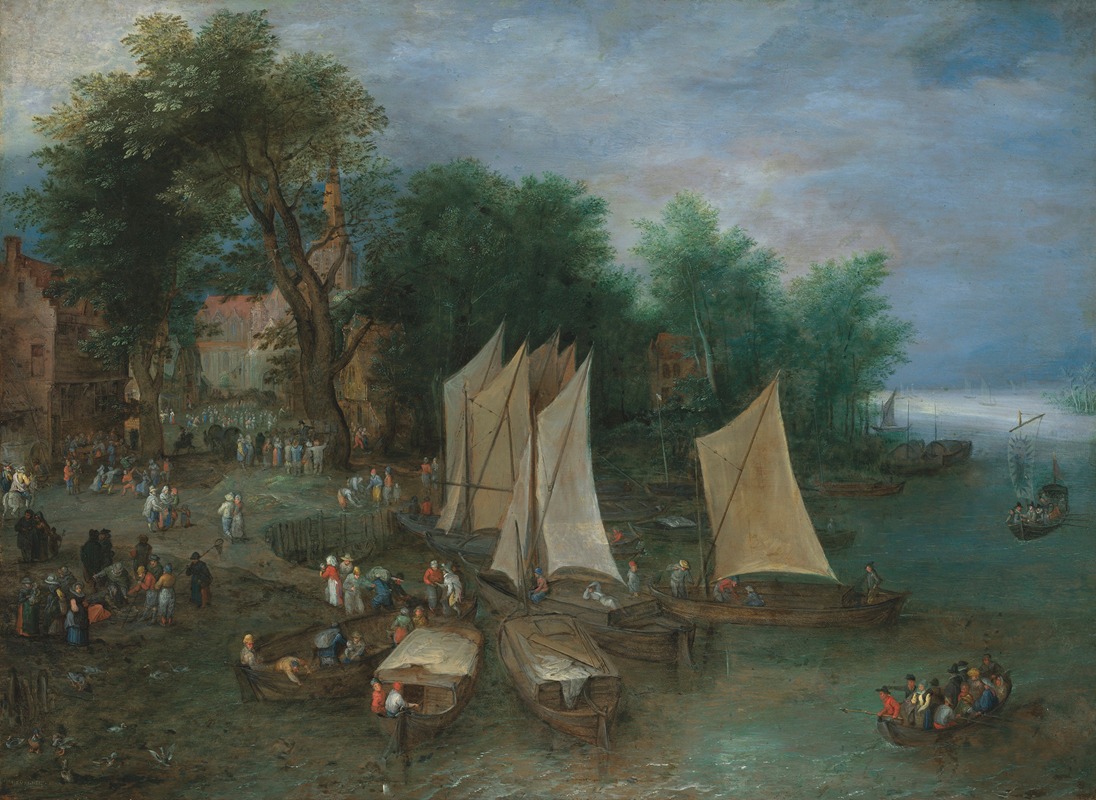
A landing stage near a village with shipping and figures
A hand-painted replica of Jan Brueghel The Elder’s masterpiece A landing stage near a village with shipping and figures, meticulously crafted by professional artists to capture the true essence of the original. Each piece is created with museum-quality canvas and rare mineral pigments, carefully painted by experienced artists with delicate brushstrokes and rich, layered colors to perfectly recreate the texture of the original artwork. Unlike machine-printed reproductions, this hand-painted version brings the painting to life, infused with the artist’s emotions and skill in every stroke. Whether for personal collection or home decoration, it instantly elevates the artistic atmosphere of any space.
Jan Brueghel the Elder's painting A Landing Stage near a Village with Shipping and Figures is a work attributed to the renowned Flemish artist, who was active during the late 16th and early 17th centuries. Jan Brueghel the Elder (1568–1625) was a prominent figure in the Flemish Baroque tradition and is celebrated for his detailed landscapes, allegorical scenes, and still-life compositions. He was the son of Pieter Bruegel the Elder, another highly influential painter, and carried forward his family's artistic legacy.
This particular painting depicts a serene riverside scene, featuring a landing stage near a village. The composition includes a variety of figures engaged in daily activities, as well as boats and ships docked along the water. The work exemplifies Brueghel's mastery of intricate detail and his ability to create lively, atmospheric landscapes. The figures in the painting are rendered with precision, showcasing the artist's skill in integrating human activity into natural settings. The inclusion of shipping and figures reflects the economic and social importance of waterways in the Low Countries during this period.
Jan Brueghel the Elder was known for his collaboration with other artists, including Peter Paul Rubens, and for his ability to depict both natural and man-made elements with remarkable clarity. His works often feature a harmonious balance between human activity and the surrounding environment, as seen in this painting. The use of vibrant colors and meticulous brushwork is characteristic of Brueghel's style, contributing to the overall sense of liveliness and realism.
The exact date of creation for A Landing Stage near a Village with Shipping and Figures is not definitively documented, but it is consistent with Brueghel's mature period, when he produced many of his most celebrated landscapes. The painting is an example of the artist's ability to capture the essence of rural and maritime life in the Flemish region, reflecting the cultural and economic context of the time.
As with many of Brueghel's works, the painting demonstrates a keen observation of nature and human interaction, which was a hallmark of Flemish Baroque art. The detailed depiction of the ships and the bustling activity around the landing stage suggests the importance of trade and transportation in the region. The village in the background, with its modest architecture, provides a sense of place and anchors the composition in a specific cultural setting.
The current location of the painting is not specified in this context, and further details about its provenance or history of ownership are not provided. However, works by Jan Brueghel the Elder are held in numerous prestigious collections and museums worldwide, reflecting his enduring influence and the high regard in which his art is held.
This painting is a testament to Jan Brueghel the Elder's skill as a landscape painter and his ability to convey the vibrancy of everyday life in the Flemish countryside. It remains an important example of his contribution to the development of landscape painting in European art history.





